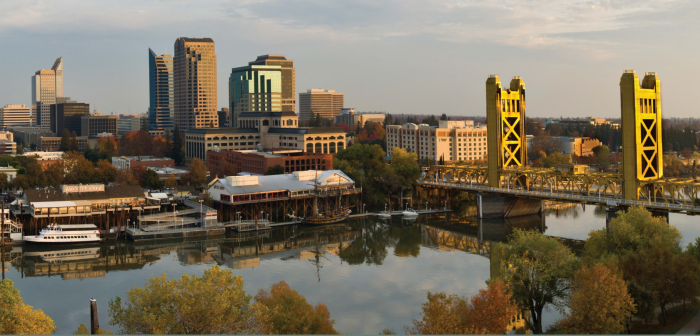Keeping Hope Alive

David Ivers is from Sydney, Australia. He is a qualified Primary and Secondary School Teacher. In total, he has served on school leadership teams for 16 years in senior leadership roles.
To hope is a duty, not a luxury.
To hope is not to dream, but to turn dreams into reality.
Happy are those who dream dreams,
and are ready to pay the price to make them come true.
Leon Joseph (Cardinal) Suenens. (1974).
A New Pentecost. New York: The Seabury Press. p. Xiii.
One could be forgiven for thinking that during the COVID-19 Pandemic, the virus had not just infected our bodies but our minds as well. For some, it has changed their psyche and given an altered view of reality. When this mindset sets in, so too does our flight or fight instinct, which neuroscience tells us is hard-wired into the brains of every human being. When this takes root in a collective, the collective can end up acting as if they all share the one brain. This is the classical sign of ‘Group-Think’ and it is extremely dangerous, especially for an organization. It powers itself from the notion that the majority opinion is always right, even if that opinion is powered by fear or ignorance, rather than an objective view of reality. In organizations, it is essential that leaders be people who influence objectively. After all the leadership group’s expected role in almost every organization, you might study, is to be inspirational to those they seek to lead. So, from a leadership perspective, Cardinal Suenens is certainly on the money. For a leader who sees their role as being an inspiration to the team they lead, having hope for the organization, hope for the team, and hope for the future is not a luxury, it is not an optional extra. Being a hope-filled leader is a duty!
There is of course a connection between hope and neuroscience. The father of Lateral Thinking and applying what neuroscience and medicine tell us about the Brain and Learning is Dr. Edward De Bono. According to De Bono, hope is critical to developing new ways of thinking and in turn creating a worthy future.
“If we felt that we were already operating at the limits of our thinking system, there would be little hope. We would look forward to a future in which the increasing problems would overwhelm us. With an emphasis on new thinking, we can rekindle hope for a much better future. Revolutions do not have to be negative. Positive revolutions can take place. And the first such revolution must be in our attitude to thinking. Thinking is not just being right and avoiding error. Thinking is exploration, new concepts, and design for a better future.”
Edward De Bono. (2016). I Am Right, You Are Wrong, From This To The New Renaissance: From Rock Logic To Water Logic (E-Book). United Kingdom: Penguin Life. (p.269).
Does this mean that there is a connection between leaders that lead with hope and the health of the organization and its culture? The simple answer to this question is yes! Humans are by their nature aspirational. That is to say, they regularly exercise an innate ability to consider what a future might look like, what role they might have and how the world might be a better place because of it. At the end of the day, most people like to think that when they retire, they will leave behind a legacy. When they move to another job at a different organization, they will leave behind a portfolio of success that others will point to and benefit from. This aspiration gives rise to a hope-filled view of the world. It is not just a duty for leaders to inspire hope, it is a ‘must-do’ activity for any person wanting to create personal and professional success for themselves. Nonetheless, the research of James Kouzes and Barry Posner suggests that hope is a critical component of good leadership.
“Leaders must get others to see the exciting future possibilities. They breathe life into visions. They communicate hopes and dreams so that others clearly understand and share them as their own. They show others how their values and interests will be served by the long-term vision of the future. Leaders are expressive, and they attract followers through their energy, optimism, and hope.”
Kouzes, James. M., Posner, Barry. Z. (2012). The Leadership Challenge. San Francisco: Jossey- Bass. (p.100).
The Anthropology at work here is fairly straightforward. Most humans live their life in the hope that tomorrow will be better than today, which was better than yesterday. Somehow as individuals, each of us contributes something to our global humanity, our global village. The reason why this comes into our workplace is that Organizations can be thought of as a village, a community. By way of example, the important thing about a village in a developing country is that the leadership of the village, the chief and elders, need to be across what is happening in the village, ensuring that every person in the village has a role, whilst being attentive to the safety, security, and wellbeing of the village, including its health and cleanliness. The leadership of the village would ensure that there are regular cultural activities that bring a village together in an opportunity to celebrate being the great village they are, with the hope, dreams, and aspirations of every villager contributing towards the overall hopes, dreams, and aspirations of the village as a collective. Hope is fundamental to the success of the village. It is also fundamental to the success of the corporate village we call an organization, irrespective of whether they are government, church, or private agencies.
The questions I would pose for the leadership group of an organization are:
- Does the leadership group bring hope and with it trust through the doors every day?
- When was the last time the leadership group spoke of and demonstrated a hope-filled future?
- When did the leadership group employee ‘Water Logic’, Logic that melds and shapes to the context?
- Is hope seen as a strength or weakness within the organization? What is the narrative that feeds that perception?
- Is hope perceived as an opportunity that may lead to ‘blue sky’ thinking or is it perceived as a threat?
- How does the leadership group celebrate hope within their corporate village?
- What does the leadership group do to build up this sense of community and purpose within the corporate village of the organization?
The findings from a recent Gallup study of over 10,000 employees, begs the question as to why hope is often glossed over in the business thinking within an organization?
“The Gallup study of over 10,000 employees found that followers have four primary needs of their leaders: trust, compassion, stability, and hope. They’re all critical, all the time. But since the outbreak of COVID-19, hope is more valuable than it’s ever been. Because hope is what will get us through this…Gallup finds that employees who strongly agree that their leader makes them feel enthusiastic about the future (Gallup’s measure of hope in the workplace) are 69 times more likely to be engaged in their work compared with employees who disagree with that statement. And hope is also strongly associated with student success — 85% of K-12 school superintendents say student hopefulness is a “very important” way to measure the effectiveness of public schools.”
Royal, Ken. (2020). Leading Your Workplace With Hope Through COVID-19. Gallup
The staggering thing with the Gallup research is the similarity in the generalized findings from the 2017 research of Professor Paul Zak on ‘The Neuroscience of Trust’.
“My team also found that those working in high-trust companies enjoyed their jobs 60% more, were 70% more aligned with their companies’ purpose.”
Consider how well this aligns with the Gallup statistic that with ‘Hope’ employees were “69 times more likely to be engaged.” Sure this may not be a percentage but both statistics are showing that Trust in employees and giving employees a high degree of Hope, correlates to very high degrees of employee engagement and alignment to the purpose of the organization. Trust and Hope are perhaps cousins or two sides of the same coin. If a person whom you trusted and had given you so much hope, suddenly breached your trust in them, perhaps through a breach of confidentiality, how do you continue to trust them and how would you still be able to accept their hope and vision for the future?
The other interesting connection is in Neuroscience between Trust and Hope. The research from Paul Zak indicates that Oxytocin triggers our sense of Trust. In 2016, a team of researchers from Duke University, led by Social Psychologist Patty Van Cappellen, found that Oxytocin can also be the trigger for spiritual awareness/experiences and associated emotions which includes Hope.
“Oxytocin occurs naturally in the body. Produced by the hypothalamus, it acts as a hormone and as a neurotransmitter, affecting many regions of the brain…Those who received oxytocin reported experiencing more positive emotions during meditation, including awe, gratitude, hope, inspiration, interest, love, and serenity.”
Jones, Alison. (2016). Oxytocin Enhances Spirituality, New Study Says. From Duke University.


The real hope is that we will, post COVID-19, have organizations in which people can continue to dream dreams and make them come true.
So where does all of this research lead us to in the context of COVID-19? The research consistently points to the fact that activities that involve social bonding, will effectively trigger Oxytocin in the Brain. Given the social/physical distancing requirements made by ‘Public Health’ orders, social bonding activities, such as team problem-solving activities and team sports, become problematic. This of course explains why there appears to be less hope in the world today. With more distancing and less face-to-face contact, maintaining a sense of belonging becomes problematic. The distancing feeds a new narrative in the absence of information that those still working from the office might be privy to. The casualty is both hope and trust. Thankfully there are still things you can and ought to do that will inspire and generate hope, as Neuroscientist and educator Eric Jensen has noted.
“How much hope and optimism your kids feel at school is more important for boosting achievement than IQ or overall talent. Without the everyday feeling of hope, every other strategy you use at your school will fall flat.” Eric Jensen.
Jensen, Eric. (2011). Startling Secrets of High-Achieving Schools with High Poverty Students. From: Jensen Learning.
Hope is almost always future-oriented. From a personal perspective, one thing that can be done is to sit down and either work out your own Personal Plan for the year or revise your current one. The Personal Plan has ‘6 Key Areas’, in which you can identify at least one hope or aspiration per ‘Key Area’ for the next 12 months. The interrelated ‘6 Key Areas’ are:
THE ‘6 KEY AREAS’ ARE:
- Family / Friends
- Health / Well-Being
- Study–Formal / Informal
- Career
- Wealth Creation
- Inner-Life and Well-Being
By isolating and identifying your own personal goals, dreams, hopes, and aspirations you are then in a better position to know whether the hopes, dreams, and aspirations identified at work through the leadership group, align or could align with some modification, to your Personal Plan. Where alignment is likely, you will create a bond with the organization and in turn engage more fully. The template that I use for my Personal Plan can be downloaded from here.
For the leadership group, they can look at revising the Strategic Plan of the organization or creating a new one. Such a process, if done well, should engage all facets of the organization, so that people feel that they have contributed to the planning of the organization for the next 3-5 years. It gives them a sense of ownership and belonging, which in turn builds trust and creates hope. This significantly improves the level of employee engagement and employee alignment. It literally becomes a Win-Win and you could start the process with a ‘Pulse Survey’.
In observing high-poverty, high-performing schools, Dr. Emily Gibson and Dr. Robert Barr in their excellent 2013 eBook, ‘Building a Culture of Hope’, found that a sense of optimism and hope is created by doing at least 7 things well.
- A welcoming environment
- An atmosphere of respect and safety
- An emphasis on success
- Communitywide celebrations
- An emphasis on the positive
- High expectations
- Coordination of community services
From: Gibson, Emily., Barr, Robert. (2013). Creating a Culture of Hope (eBook). From: Solution Tree.
These are such obvious things to be doing and doing well, one could be forgiven for thinking it needs to be more complicated. The simple answer is no, it doesn’t. In past articles, I have often referenced the work on ‘Psychological Safety’ in organizations by Harvard Professor Amy C Edmonson and her excellent book ‘The Fearless Organization’. These 7 things to do well, annunciated by Gibson and Barr, apart from generating hope and trust, also create a pathway into creating a ‘psychologically safe’ organization.
Ultimately, we want thriving organizations that are life-giving and purposeful. We need these organizations to be led by people who can create high trust – hope-filled organizations that are not just places of work, they are places with an intense feeling of community, they are the village at work. In the process, the real hope is that we will, post COVID-19, have organizations in which people can continue to dream dreams and make them come true.
“With high hope for the future, no prediction in regard to it is ventured.”
Abraham Lincoln
Second Inaugural Address, March 4, 1865
Note: David Ivers is a Fellow of the Royal Anthropological Institute (Great Britain & Ireland)

CAREER ADVICE

GOV TALK




